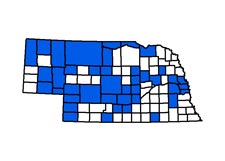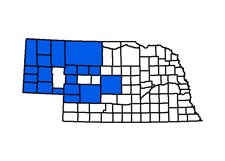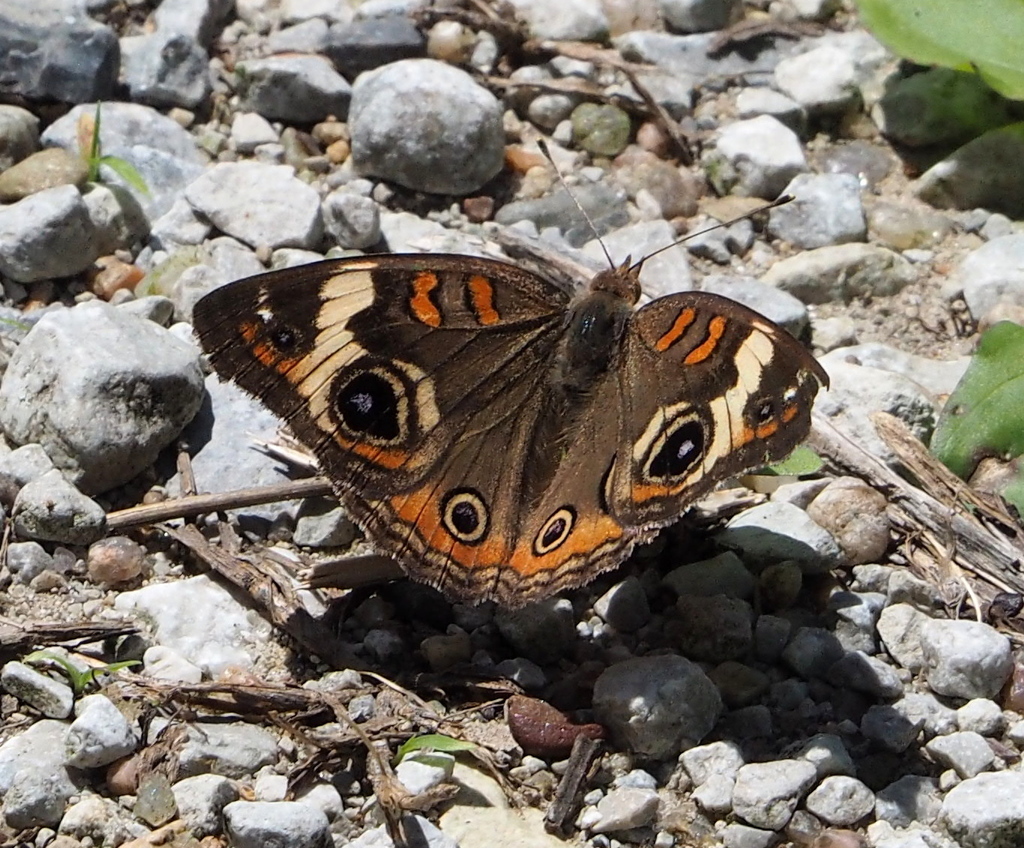Fontenelle Forest – Seeing on “Nebraska and Great Plains Butterflies and Moths” that Hackberry Emperors were being found at Fontenelle Forest and needing them for my Big Year list Thursday morning I headed east for a day of adventures. As always the weather forecast was a factor with late day/evening storms being forecast for southeast Nebraska. I arrived at Fontenelle Forest in the late morning and began to scout out the area. Driving to the Hitchcock Wetlands Learning Center the Hackberry Emperors were everywhere with a few Red-spotted Purples sprinkled in. Cool I thought, two new species for the year without getting out of the car. So I drove back to the Camp Logan parking area and started to hike up the Bladdernut Trail. I hadn’t gone far when a hairstreak flew off the trail and perched atop a tall “weed” (aka unknown plant). As I angled around to get a good side view he/she rotated to keep facing me. When it finally tired of this game and let me get a good look I was amazed. It was a Hickory Hairstreak. Eventually it tired of my attention and flew off into the trees. A short time later it began to sprinkle. Not wanting to waste time waiting for the weather to clear I headed south to a couple of my “go to” spots in Richardson and Pawnee counties.
Kinter’s Ford SWMA is located on State Highway 8 a mile east of the Richardson/Pawnee county line. I pulled into the parking area east of the Big Nemaha River and was greeted with the sight of flowers everywhere. Checking out the milkweeds I found several Delaware Skippers – new for my Big Year. Noticing a large patch of smooth sumac in bloom next to the trees I went down to check those out as well. Butterflies were everywhere. People often overlook these as nectar sources when they are in bloom. But the butterflies don’t. Among the butterflies found there was a Silvery Checkerspot and several Dione Coppers (both new for the Big Year), along with three Giant Swallowtails and a host of common species.
Prairie Knoll SWMA is a quarter section located 1.5 miles north and a mile west of Du Bois in Pawnee county – about 5 miles away from Kinter’s Ford. It is one of my favorite areas because of the number of butterfly milkweeds found there. Road hunting the flowers in the ditch on the way there I found my year’s first Coral Hairstreak and Regal Fritillary. Strolling the property revealed no additional new species, with the milkweeds there just beginning to bloom.
Four Mile Creek SWMA – With some time left before the weather was supposed to close in I did some exploring end ended up back in Richardson county at Four Mile Creek SWMA three miles east and a mile south of Kinter’s Ford. There were common and butterfly milkweeds in flower along the road and parking lot. There I found a Great Spangled Fritillary, and about a half dozen Banded Hairstreaks and Dun Skippers all new for the year as well as Roadside and Tawny-edged Skippers.
The Free Truck Wash – With the skies darkening to the north and west I decided to head back. Not wanting to be on the interstate with a bunch of traffic in bad weather I opted for an alternative more southerly route through Adams, Claytonia and Wilbur which in hindsight was probably a mistake. It started raining just south of Lincoln and by the time I got to Claytonia it had begun to hail. I took shelter under a tree but that seemed to do little good. Rather than sit there and take a beating I headed back onto the road and drove through a couple more miles of hail before the storm regressed back into a torrential downpour. After 25 miles of rain it finally stopped somewhere south of Seward and from there the rest of the trip was uneventful. The next morning I heard that DeWitt (5 miles distant from Claytonia) received over 7″ of rain. Crazy – nobody needs that.
Delaware Skipper (Anatrytone logan) – The most common of the three Golden Girls (see June 14 post), this adaptable grassland species flies in multiple generations from mid summer to early autumn, sometimes finding their way into urban parklands and landscapes. It’s larvae feed on various prairie grasses including big bluestem and switchgrass. The Delaware Skipper is found statewide. It can be separated from the other gold skippers by the black veins on their wings.

Dun Skippers (Euphyes vestris) – This uniformly dark skipper can be confused with Northern Broken Dash and Little Glassywing Skippers (more on them in another post later), but it is by far the most common of the three. It’s larvae feed on various sedges. This species is found statewide as well. With records extending into early September at least a partial second brood is likely.

Dione Copper (Lycaena dione) – Also called the Great Gray Copper this species is one of the larger coppers, being about the same size as a quarter. A single flight can be found from mid June to early July. The length of the orange hindwing border is variable, being more extensive in females. This copper is found statewide. Larvae feed on various Docks (Rumex sp.).


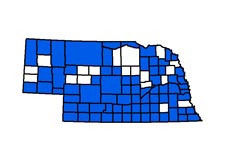
Coral Hairstreak (Satyrium titus) – Larvae feed on Chokecherry and Plum (Prunus sp.). While in the same genus as the other hairstreaks it actually lacks a tail on the hindwing. Instead this butterfly can be identified by the “coral” colored markings on the outer margin of the ventral hindwing. While wild plums are larval hostplants most are found on/near chokecherries. Finding milkweeds in bloom in close proximity to chokecherry plants increases your odds of locating this butterfly. They are found statewide.


Banded Hairstreak (Satyrium calanus) – Larvae feed on oaks and their range in Nebraska largely coincides with that of native bur oaks. Adults often perch on their host plants with males flying out to investigate passing butterflies. They can be highly localized, often being found exclusively on the same tree or two for multiple years while being absent from other trees nearby. Tapping oak branches puts them into flight (perched in the trees they are not easily located). Checking flowers in the vicinity of oak trees can also be productive. The Band in the common name refers to the band of white markings on the underside of the hindwing. This butterfly is NENHP listed as a Tier 2 species.
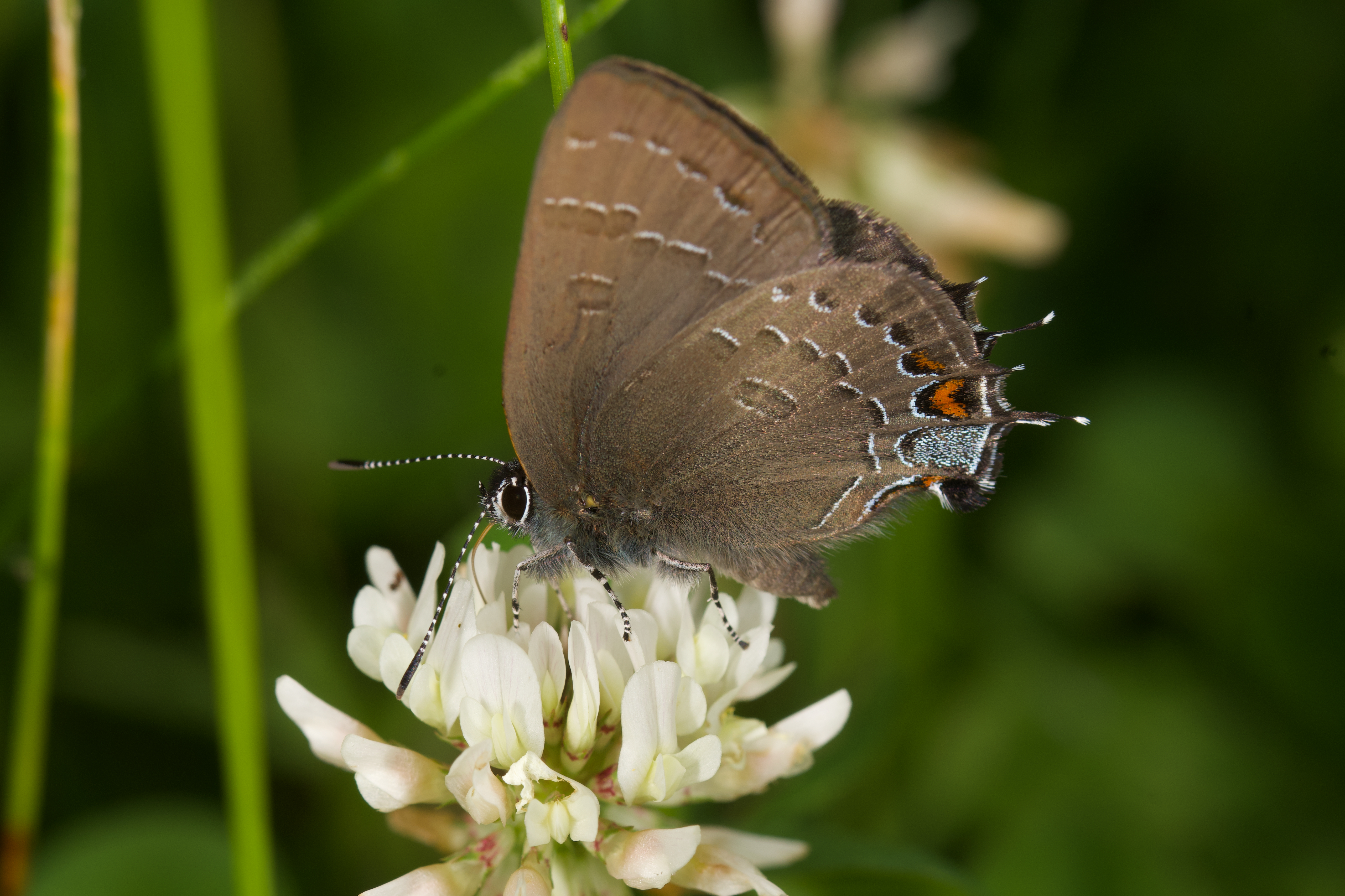
Hickory Hairstreak (Satyrium caryaevorum) – Hickory Hairstreaks are seldom reported and their range is restricted to southeast Nebraska where their larval hostplants native hickories (shagbark and bitternut) occur. This butterfly is NENHP listed as a Tier 2 species.

Regal Fritillary (Speyeria idalia) – This handsome butterfly is listed as a Tier 1 species on the NENHP rankings meaning it is a species of concern nationwide. Regal Fritillaries have been found statewide and while not as numerous as in the past they can still be found in good numbers at some localities. Their larvae eat various Violets (Viola sp.) and overwinter as freshly hatched caterpillars in leaf litter. Larvae surviving the winter begin feeding in the spring and adults begin to emerge in mid June. After a few weeks during which mating occurs most males die and the females go into a period of inactivity until late August/early September when they begin the process of egg laying.

Great Spangled Fritillary (Speyeria c. cybele) – Ten subspecies of this butterfly cross the continent from Nova Scotia to the Puget Sound. The nominate subspecies occurs in Nebraska where it has been found everywhere except the southern panhandle and southwestern counties. Like the Regal Fritillary it emerges in mid June and lingers into early September. Larvae feed on Violets.

Silvery Checkerspot (Chlosyne nycteis) – Most sightings of this butterfly are from June into early July which would suggest a single flight. But records from as late as mid August suggest the possibility a partial second brood. Silvery Checkerspot larvae feed on a variety of composites including sunflowers, coneflowers and asters. Adults are usually found around woodland margins or at mud. Most Nebraska records are from the eastern and northern parts of the state. Adults are similar to Pearl Crescents and Gorgone Checkerspots but are larger than both and has more extensive open orange area on its wings then Gorgone Checkerspots. This butterfly is on the NENHP listed as a Tier 2 species.


Red-spotted Purple (Limenitis arthemis astyanax) – There are two subspecies of this butterfly. The nominate subspecies Limenitis arthemis arthemis is more northerly in distribution and has a broad white band across its wings. Limenitis arthemis astyanax (found in Nebraska) is more southerly in distribution and lacks the broad white band. It is thought that this adaptation is a form of mimicry to gain protection from predators by resembling Pipevine Swallowtails whose larvae feed on poisonous pipevines which renders them distasteful. Red-spotted Purples have been found on the wing from June into September, but the bulk of our sightings are from June into mid July. Chokecherry (Prunus virginiana) is the primary larval hostplant in the state. Adults seem to prefer woodland margins. This species ranges west up to the the panhandle where it is replaced by another banded sibling species Weidemeyer’s Admiral (Limenitis weidemeyerii). Hybrids between these two species have been found at the Niobrara Valley Preserve in Brown and Keya Paha counties. But that’s fodder for a later post.


Hackberry Emperor (Asterocampa celtis) – The Hackberry Emperor larvae feed on (you guessed it) Hackberry trees. This butterfly can be found statewide and has two generations peaking in mid June and mid August. It frequents woodland margins where it can sometimes be abundant. While also visiting flowers it, along with many other woodland butterflies seeks out sap flows, rotting fruit and the like. It is not averse to landing on humans where it may take up perspiration, presumably for the salt content.

So all in all an exciting day. 11 new species for the Big Year bringing the ytd total to 56. I would encourage you to visit the three Wildlife Management Areas in Richardson and Pawnee counties. You will be the only person there. They are in close proximity and you can have good success walking the roads but I’d encourage you to visit the sumac in bloom at Kinter’s Ford which is a pretty short walk.
One interesting photo was sent in by “acolescjj” that Mark Brogie was able to identify as Mournful Thyris (Thyris sepulchralis). Thanks to you both!!








